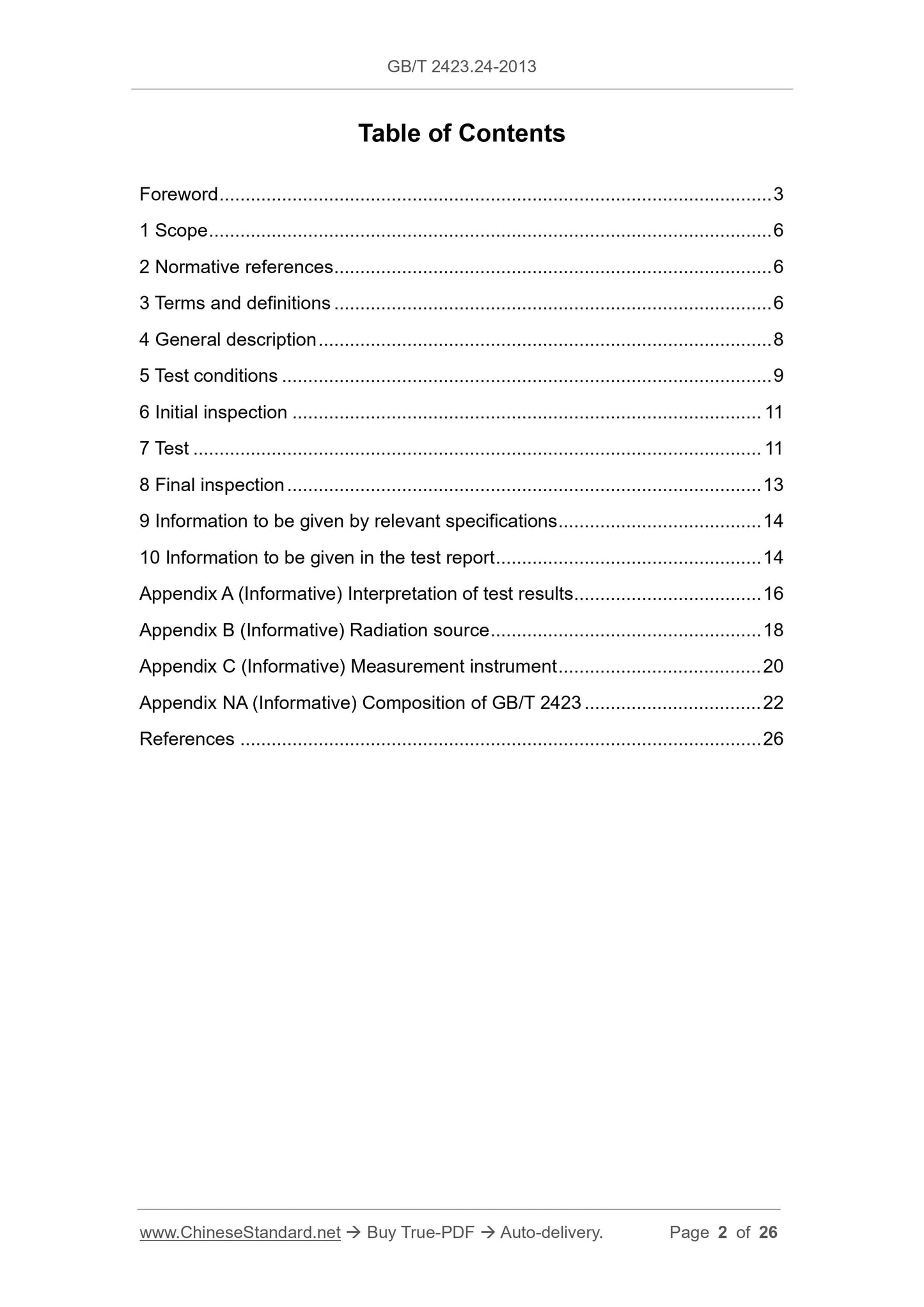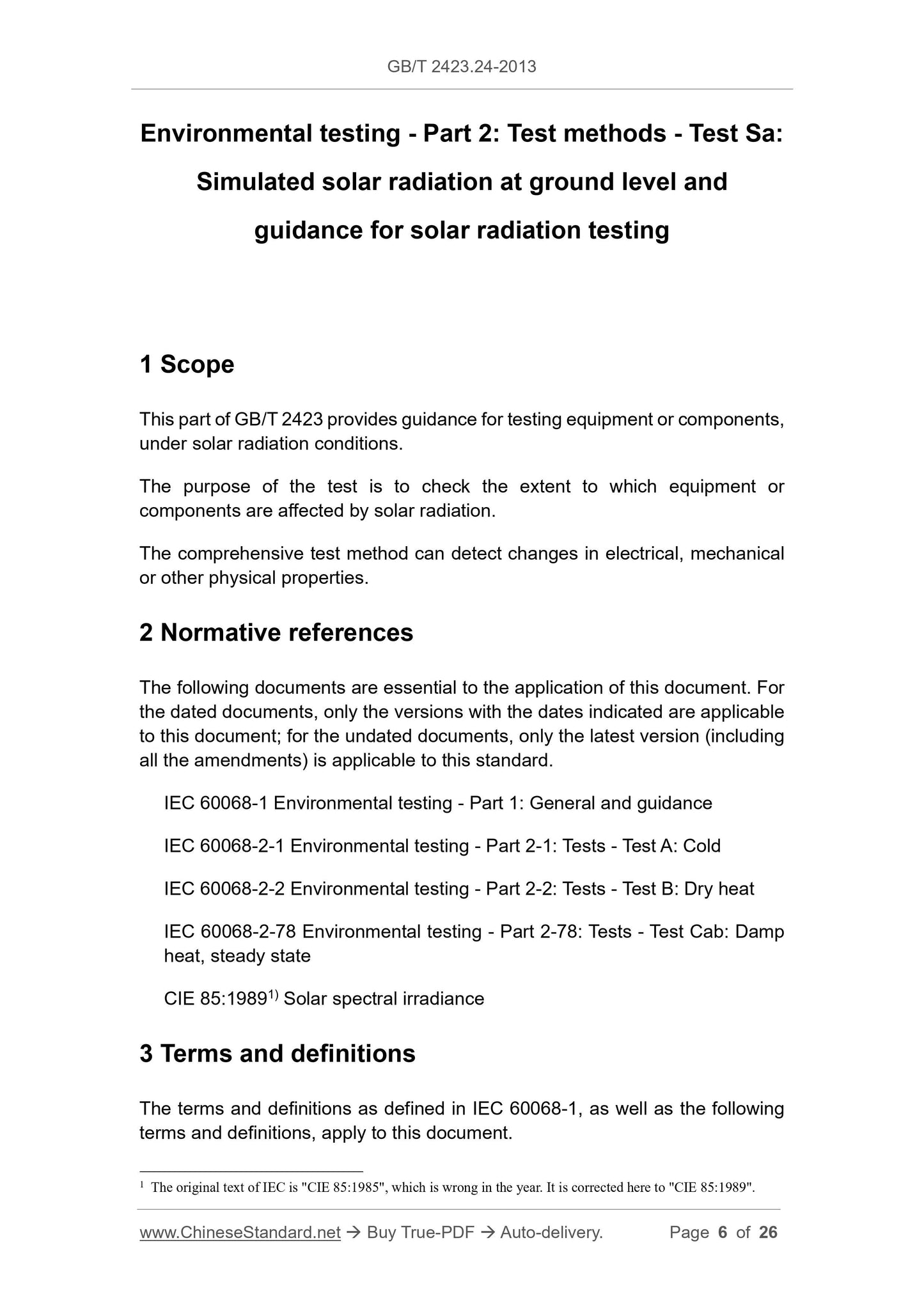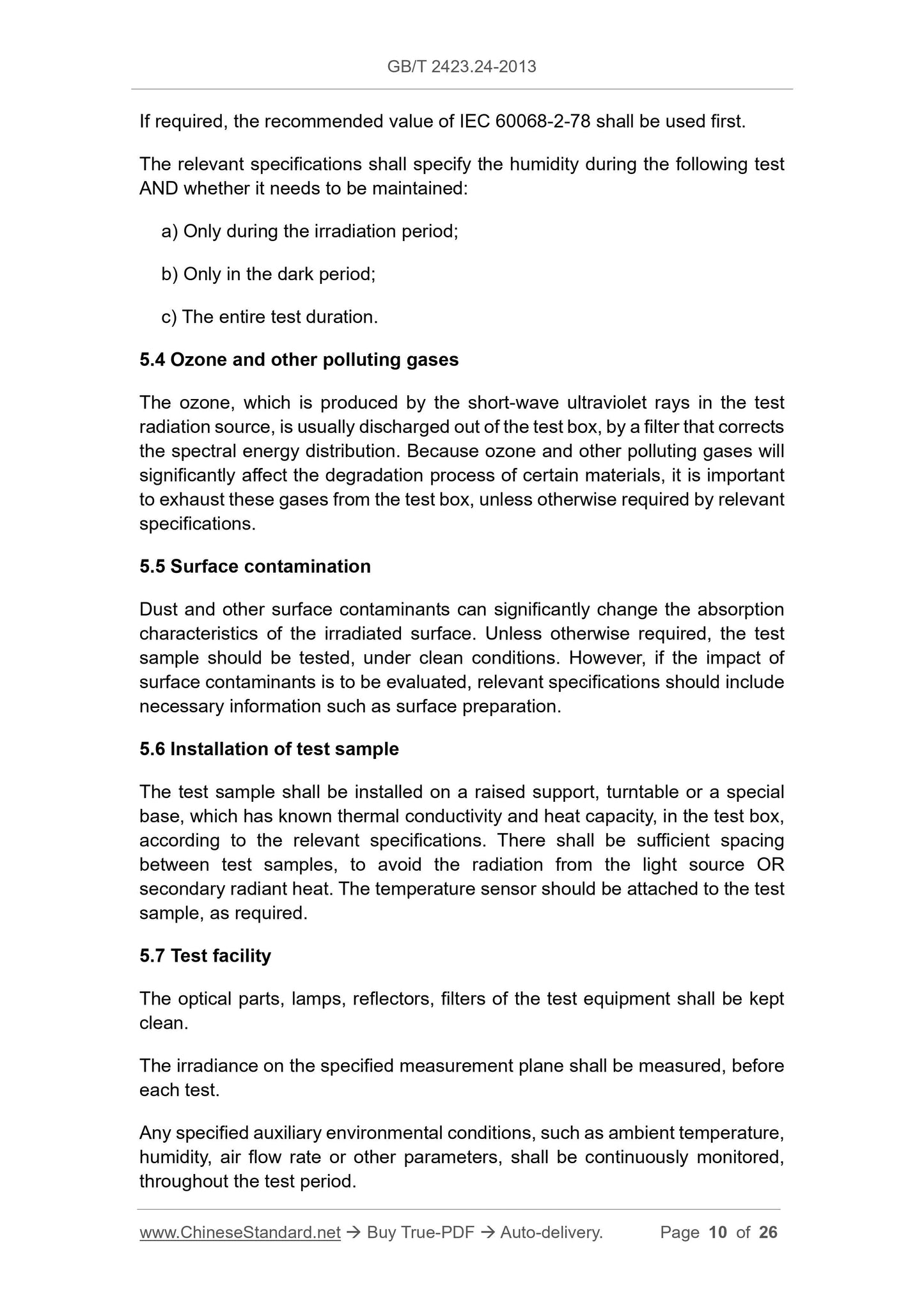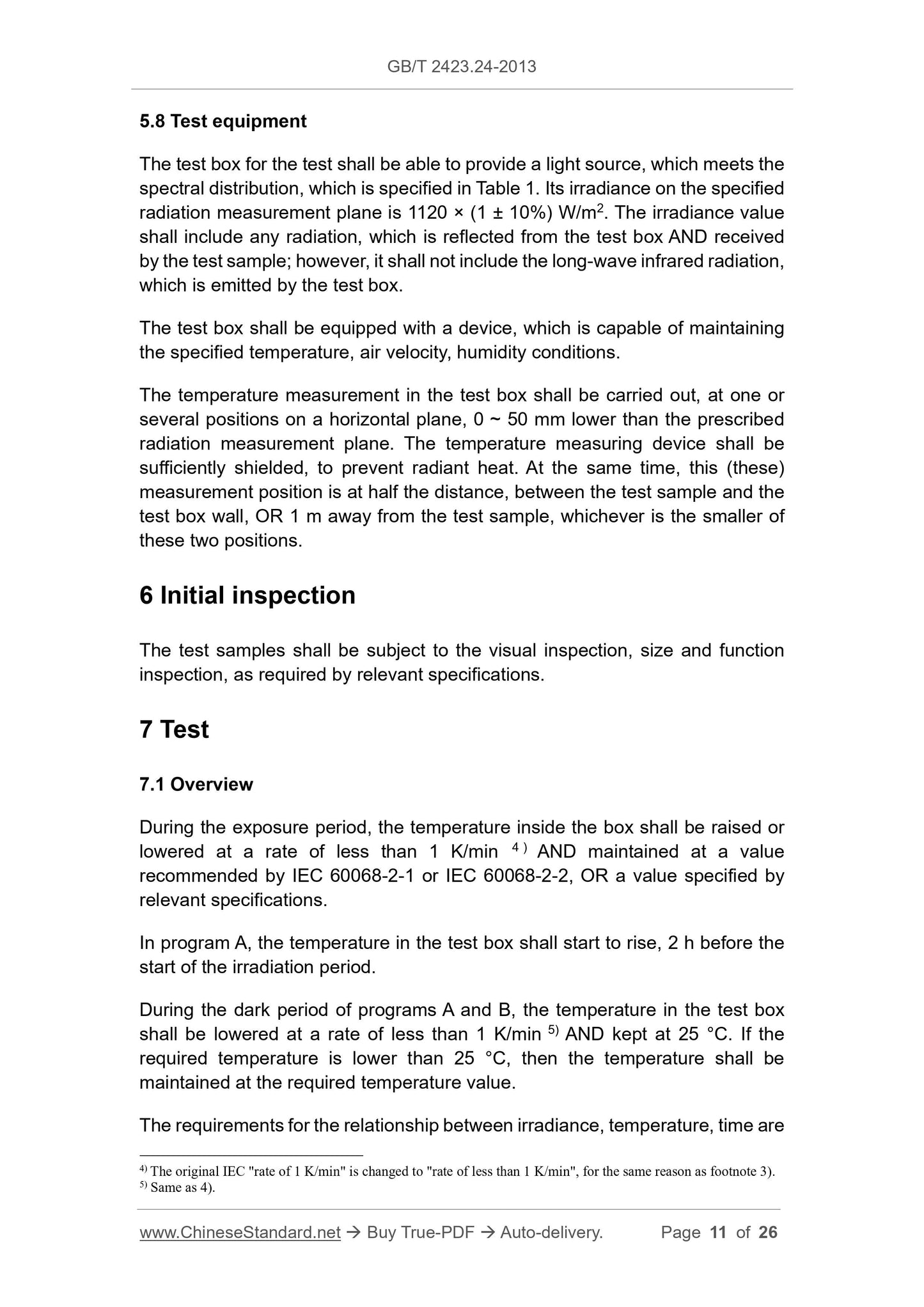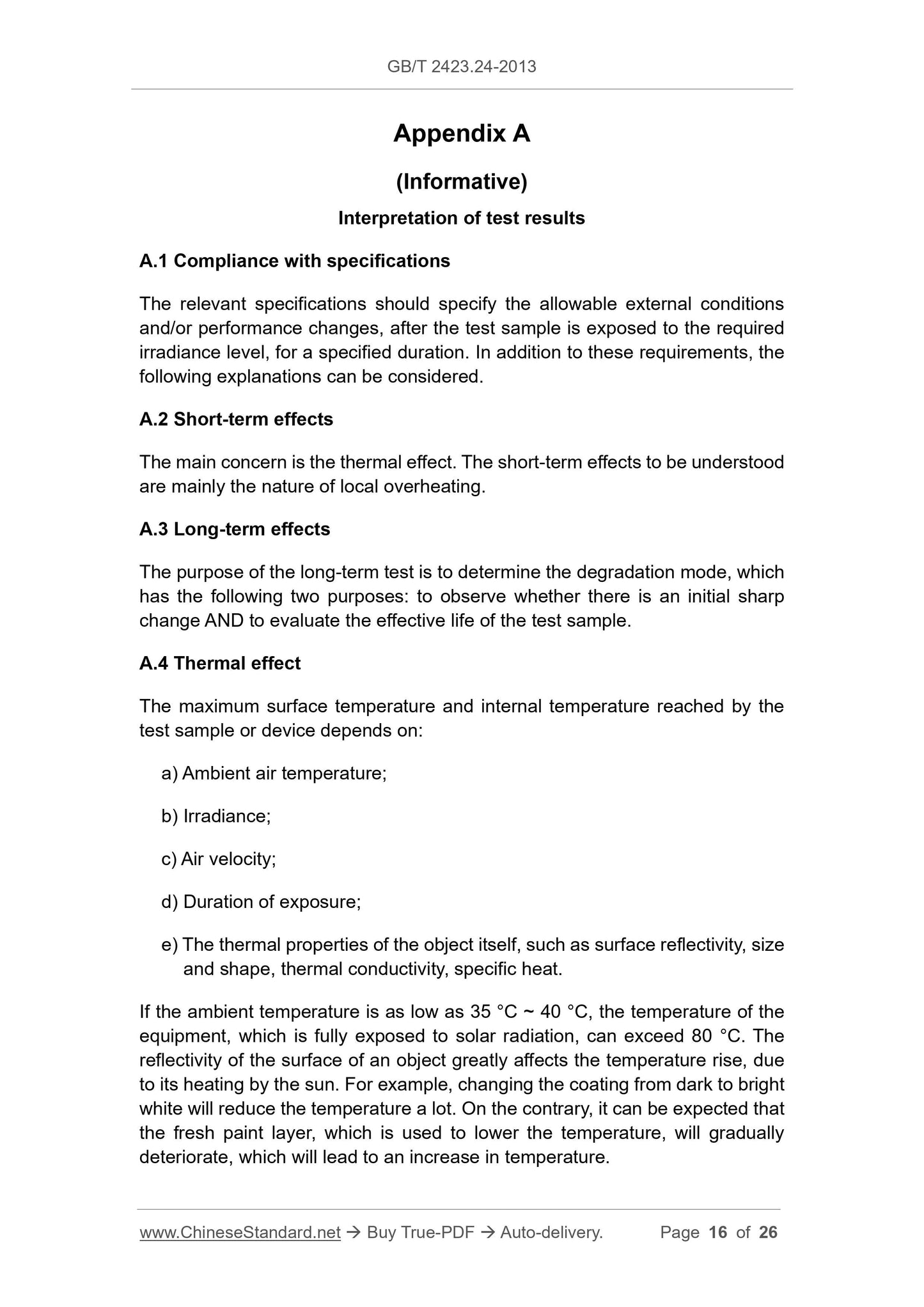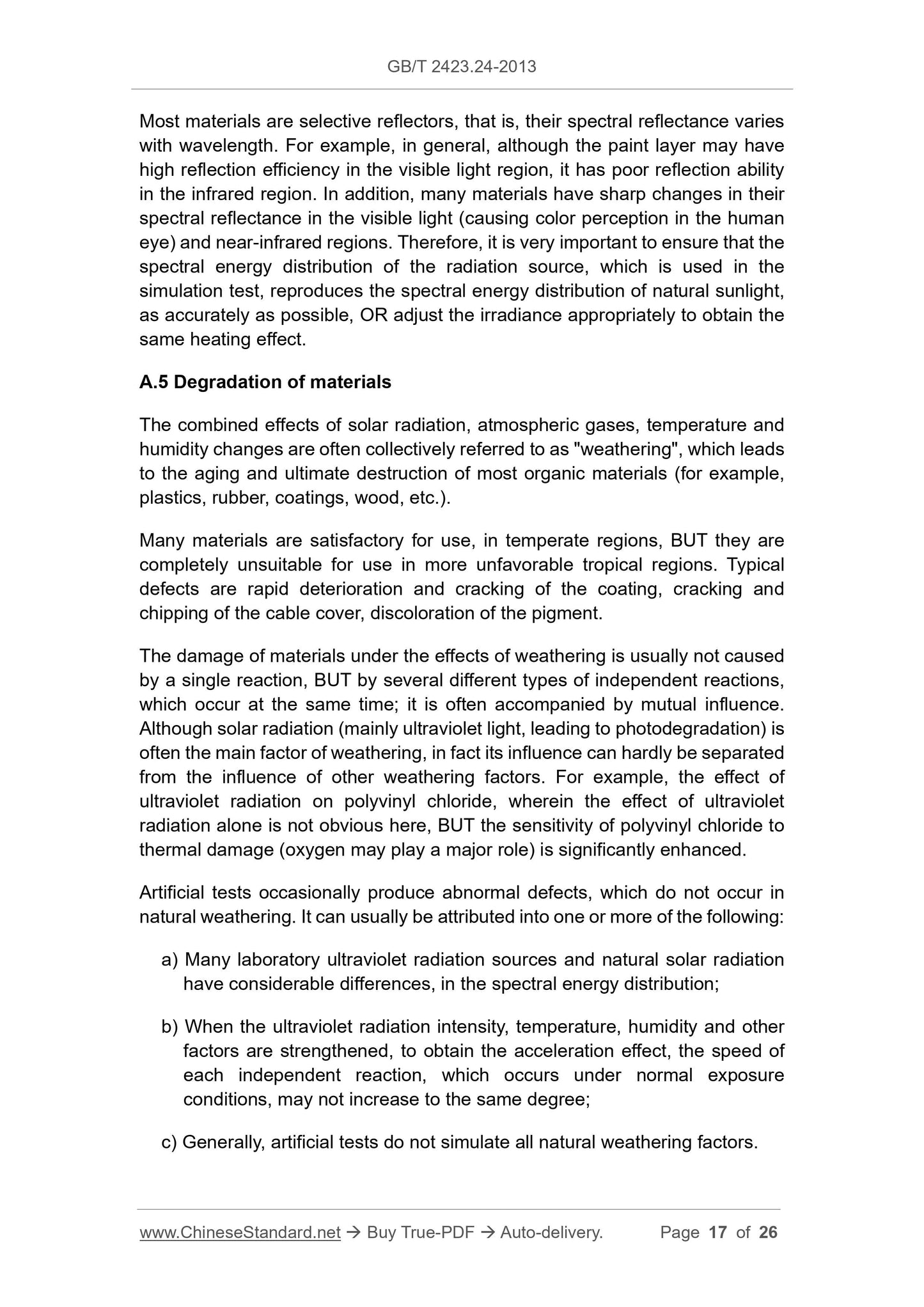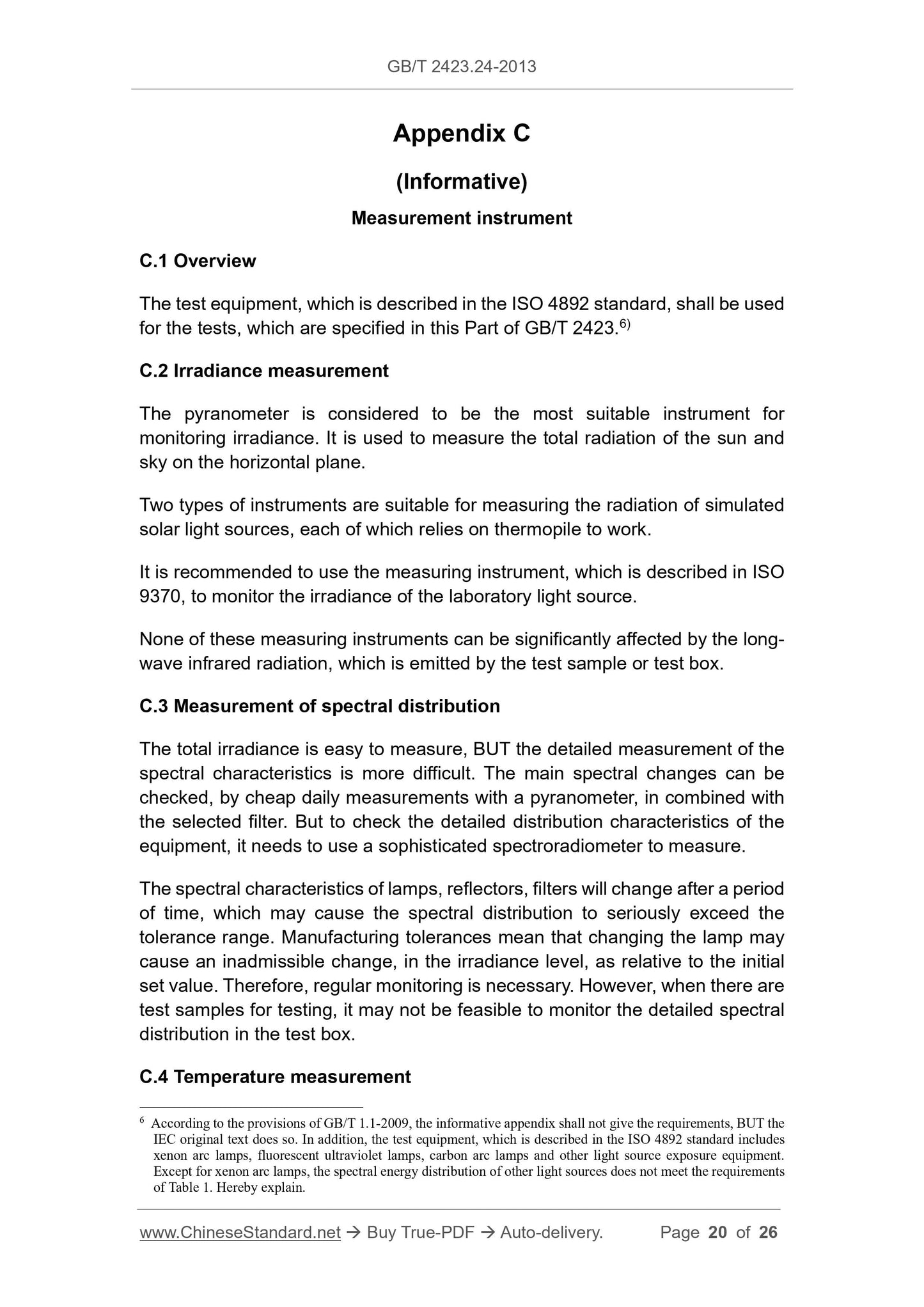1
/
of
8
www.ChineseStandard.us -- Field Test Asia Pte. Ltd.
GB/T 2423.24-2013 English PDF (GB/T2423.24-2013)
GB/T 2423.24-2013 English PDF (GB/T2423.24-2013)
Regular price
$295.00
Regular price
Sale price
$295.00
Unit price
/
per
Shipping calculated at checkout.
Couldn't load pickup availability
GB/T 2423.24-2013: Environmental testing - Part 2: Test methods - Test Sa: Simulated solar radiation at ground level and guidance for solar radiation testing
Delivery: 9 seconds. Download (and Email) true-PDF + Invoice.Get Quotation: Click GB/T 2423.24-2013 (Self-service in 1-minute)
Newer / historical versions: GB/T 2423.24-2013
Preview True-PDF
Scope
This part of GB/T 2423 provides guidance for testing equipment or components,under solar radiation conditions.
The purpose of the test is to check the extent to which equipment or
components are affected by solar radiation.
The comprehensive test method can detect changes in electrical, mechanical
or other physical properties.
Basic Data
| Standard ID | GB/T 2423.24-2013 (GB/T2423.24-2013) |
| Description (Translated English) | Environmental testing - Part 2: Test methods - Test Sa: Simulated solar radiation at ground level and guidance for solar radiation testing |
| Sector / Industry | National Standard (Recommended) |
| Classification of Chinese Standard | K04 |
| Classification of International Standard | 19.040 |
| Word Count Estimation | 21,212 |
| Older Standard (superseded by this standard) | GB/T 2423.24-1995; GB/T 2424.14-1995 |
| Quoted Standard | IEC 60068-1; IEC 60068-2-1; IEC 60068-2-2; IEC 60068-2-78; CIE 85-1989 |
| Adopted Standard | IEC 60068-2-5-2010; IDT |
| Regulation (derived from) | National Standards Bulletin No. 22 of 2013 |
| Issuing agency(ies) | General Administration of Quality Supervision, Inspection and Quarantine of the People's Republic of China, Standardization Administration of the People's Republic of China |
| Summary | This standard specifies: equipment or components under conditions of solar radiation test guidance. Test project is to check the equipment or components affected by solar radiation the degree. Comprehensive test methods to detect electrical, mechanical or |
Share

